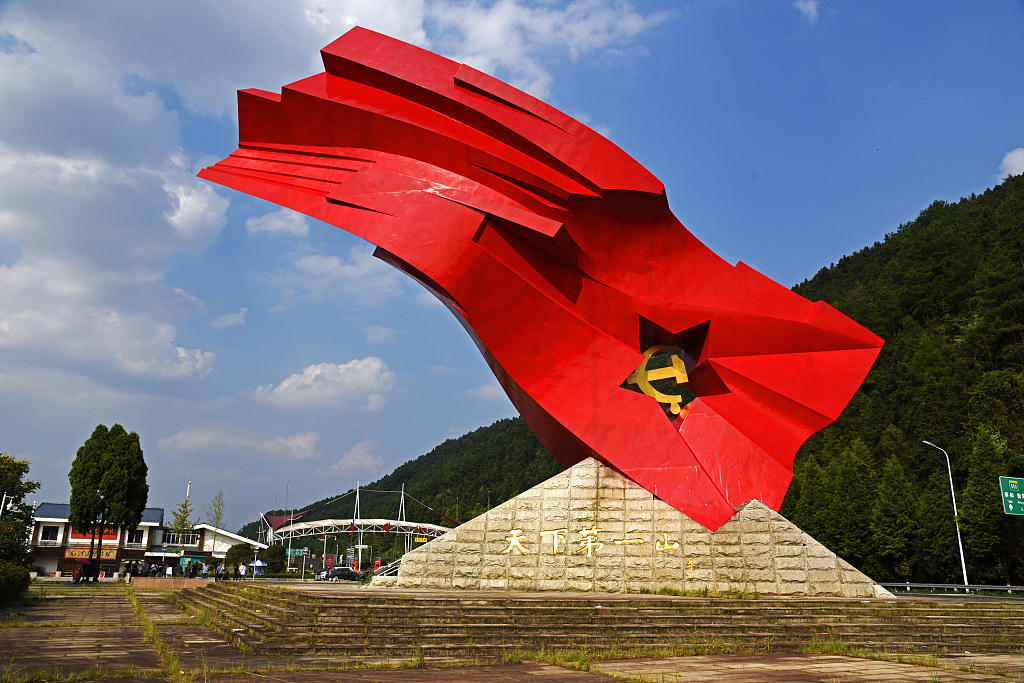CPPCC members suggest improving red tourism
- By Zhang Rui
 0 Comment(s)
0 Comment(s) Print
Print E-mail China.org.cn, March 10, 2021
E-mail China.org.cn, March 10, 2021
As the centennial anniversary of the Communist Party of China (CPC) approaches, national political advisors have appealed to improve "red tourism," in which Chinese people visit locations with significance of revolutionary history.

Revolutionary spirit is a precious resource of the CPC and is the motivation for members to devote themselves to their work, said Wu Degang, a member of the 13th National Committee of the Chinese People's Political Consultative Conference (CPPCC) and former deputy director of the Institute of Party History and Literature of the CPC Central Committee.
"Over the past century, the CPC has not only led the Chinese people to material prosperity, but has also fostered a series of revolutionary spirits - the Jinggangshan Spirit, the Long March Spirit, and the Yan'an Spirit – which have demonstrated CPC members' great character," he said.
One way to learn about these sprits is to go back and visit their places of origin. Since the 18th CPC National Congress in 2012, the CPC Central Committee has attached great importance to the protection and utilization of red tourism resources and the inheritance and promotion of red culture.
According to statistics published in 2019, the total number of tourists received by national red cultural tourist attractions had reached 5.17 billion since 2012, and the comprehensive income of red cultural tourism had reached 1.35 trillion yuan ($207.36 billion). The national red cultural tourism industry directly employed 1.3 million people and indirectly employed 5.1 million people.

Cao Hui, a national political advisor and vice chairman of Fuyao Group, said as China is pushing a "dual circulation" development pattern, the tourism industry must play a fundamental role in the consumption field.
"To construct the new development pattern, we must take care of an important task to accelerate the internal circulation of China's tourism industry. This is not only an expedient measure to expand domestic demand, but also a long-term strategic move."
In particular, he pointed out that some old revolutionary base areas are rich in red culture, ethnic culture, and green ecological resources, so a number of key rural tourism villages and high-quality routes have been formed. "This year marks the 100th anniversary of the founding of the CPC. The development of red tourism can achieve multiple win-wins," he noted.
But some problems still exist for red tourism. Zhu Xiaojin, a national political advisor and vice president of Nanjing Normal University, said the development of some red tourist sites lacks scientific and unified planning.
Zhu suggested the establishment of a leading government organization for the protection and development of red tourism resources to strengthen overall planning, while innovating the promotion and marketing model to expand the influence of red tourism. Also, he said, China should strengthen supervision, management system and mechanism construction to improve services, and ensure healthy development.
Song Jirong, another member of the 13th CPPCC National Committee and head of the Cultural Relic Hospital at the Palace Museum in Beijing, told China.org.cn that she had joined a tour to inspect the preparations and construction of the Long March culture parks in various locations last year.
"I saw local governments attach great importance to the protection and utilization of revolutionary cultural relics. For example, both Gansu and Shaanxi provinces have set up revolutionary cultural relic offices," she said. "Along the Red Army's Long March route, there are old sites, memorial halls, and lots of stories and they are testimonies to the history of Chinese revolution."
But she said scientific protection and the utilization of revolutionary cultural relics is an urgent problem to be solved at present.
She suggested setting up a revolutionary cultural relic protection and restoration standards committee to formulate restoration standards for various immovable and movable cultural relics and strengthen the preventive protection of various cultural relics.






Go to Forum >>0 Comment(s)